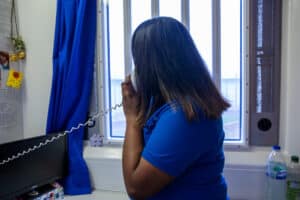A new report by Crest Advisory, ‘Ending the Inertia: a plan to transform outcomes for women offenders,’ calls for a locally driven approach to deliver change and prevent women’s offending escalating to the point of a custodial sentence. The report found that disproportionately severe prison sentences are handed out to women offenders compared to men. Here are some of the key facts:
- 36% of all prison sentences handed out to women in 2017 were for shoplifting compared to 11% for men
- The average prison sentence length for a female shoplifter in 2017 was 7 weeks – putting pressure on the prison system (at a cost to prisons alone of £8.7 million per year) but allowing insufficient time to address the causes of offending behaviour
- Only 15% of women sentenced to prison have committed serious offences (violence against the person, sexual offences, robbery, possession of weapons) – compared to 27% for men
- Short sentences of 6 months or less correspond with the highest reoffending rate of all sentences. 73% of women serving such short custodial sentences go on to reoffend, compared to 63% of men
- There are 39 women’s centres across England but coverage varies from nine across Greater Manchester, just three across Greater London and none at all in many areas including Kent, Hampshire and Essex.
Barriers
The report focuses on understanding why women are offending, which factors affect their engagement with services, what support is available to meet their needs and what would have the greatest impact on outcomes for them. It concludes that political will and consensus around the problems/solutions are not enough to drive change and identifies three main barriers to change:
Centralisation: in such a centralised system, how do you design flexible, place-based services to address the specific and complex needs of a small percentage of the overall offender population?
Fragmentation: a siloed justice system prevents a whole system approach; e.g. the move to on the day (fast delivery) pre-sentence reports processes cases quickly but prevents a proper assessment of the complex needs of women offenders
Criminal-justice centric: the criminal justice system cannot on its own tackle the wider social needs which drive offending. Mainstream services in local government, the NHS and the voluntary sector are vital.
Report recommendations
- Pilot diversion pathways in courts to identify women in need of intervention
- Explore the feasibility for a new requirement for courts to attach financial planning support as a condition of sentences, including fines
- Set up retail-based diversionary schemes for women committing shoplifting offences
- Develop a better understanding of women entering the criminal justice system via non-policing routes (e.g. prosecution by TV licensing)
- Every area to develop vulnerable women’s strategy involving criminal justice and other agencies
- Trial new out of court disposals and diversion schemes tailored to address the causes of offending
- Commission analysis on where local women are in prison to understand how it will be impacting on family life etc
- Ensure pre-sentence reports provide information about women’s needs and offending circumstances
- Devolve custody budgets for women to PCCs and mayors to increase investment in community provision
- Develop alternatives to short custodial sentences such as Intensive Community Orders and greater use of electronic tagging
- PCCs and mayors to comprehensively review current local provision to ensure they have a full picture of gender-specific provision at all points in the offender journey to be able to fill gaps and commit to 100% coverage across police force areas
- Develop gender-informed probation services which stress the importance of support to women offenders
Sarah Kincaid, Head of Policy and Insight at Crest Advisory said,
Politicians from all sides have long agreed on what needs to change to improve outcomes for vulnerable women in the criminal justice system. But despite the consensus, little has changed because the criminal justice system is too centralised and reactive to drive sustainable change. A decade on from the Corston report, alternatives to custody remain under-funded and patchy, meaning too many women continue to be sentenced to ineffective short sentences in prison.
Our report, which draws on extensive deep-dives in two major police force areas, provides a blueprint for reducing women’s offending and the numbers going to prison. We set out how local services (and budgets) need to be brought together to address women’s vulnerabilities; from mental health problems or financial hardship to domestic abuse or substance misuse.”
The Crest Advisory research highlights the lack of community-based provision and high thresholds for services, such as mental health and substance misuse, making prison often the only place many women actually receive the support they need to turn their lives around. However, short sentence lengths also compound problems as there isn’t enough time for support to make a difference.
Thanks to Andy Aitchison for kind permission to use the images in this post. You can see Andy’s work here.









